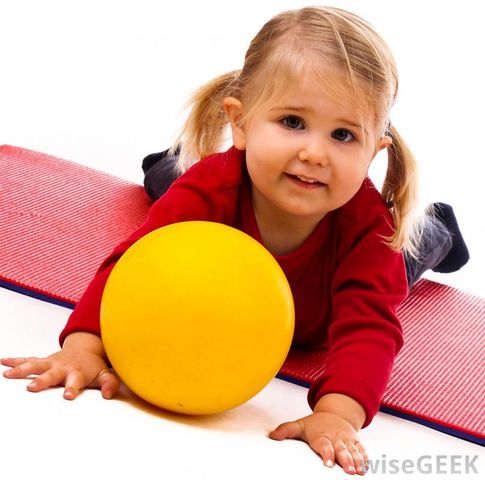Occupational Therapy at Home - Four Ways to Use a Medicine Ball

Might your child benefit from occupational therapy?
I'm proud to bring you a guest blog from Danielle Larkins with tips to use a medicine ball to help your children at home.
Danielle Larkins is a blogger and owner of Tiny-Trots, an online family resource for DC area happenings. She has two boys and embraces her male-dominated household.
Enjoy!
_____________________________________________________________________________________
Occupational Therapy (OT) is a type of treatment that focuses on improving a person’s cognitive, behavioral, physical and/or speech, allowing him or her to complete wanted or needed activities. According to the Bureau of Labor Statistics (http://www.bls.gov/ooh/healthcare/occupational-therapists.htm), more than 113,000 occupational therapists practice in the US, and they are a gift to children with special needs. These professionals enable millions of kids to live more fulfilling lives by identifying areas of need and establishing appropriate activities to reach the child’s goals.
What many parents of kids with special needs are unaware of is that OT needs to continue at home. And as important as visiting an occupational therapist can be for children with special needs, maintaining a consistent routine outside of a professional setting is equally important. Now, setting up a home gym for these activities can get expensive (into the tens of thousands of dollars!). But, home OT is not just for the wealthy. In fact, there are a number of simple, affordable OT accessories that can supplement a child’s therapy – one of which is a medicine ball. If the child’s goals include muscle strengthening, judgment, visual perception skills, body awareness, balance and endurance, then here are four exercises that can be done at home with the versatile medicine ball:
- Using the Ball as a Chair - A few years ago replacing classroom chairs with medicine balls emerged as a trend (USA TODAY). Researchers theorized that an engaged body helps keep the mind focused. Teachers of active, autistic and ADHD students reported a greater focus on the teacher and the task at hand, such as writing. The medicine balls allowed the children to adjust their comfort as they sat, improving engagement (with the added benefits of strengthening their core and improving posture). Practicing this at home is every bit as easy– just ensure the child gets up and stretches every 15 minutes (without supervision, sitting on the ball too long may place too much pressure on the tailbone).
- Roll Back + Forth - It’s as simple as it sounds. Sit on the floor across from the child with both of your legs open. Roll it back and forth to one another.
- Follow the Line - With painter’s tape, create squiggly lines and different shaped “trails” parallel to one another. Have the child place the ball on the floor at one end of the trail, and roll it on the line.
- Push Throws - The object is to throw the ball to one another while you walk (either forwards toward the child as he/she walks backwards, or vice versa).
Could your child benefit from OT? Fitness for Health’s pediatric occupational therapy services are designed to help children with a broad range of special needs enhance their self-esteem and reach their greatest potential. Our occupational therapists work with each family to create a customized plan of care that combines evidence-based sensory integration techniques and our innovative exergaming equipment—including a 3D virtual reality gaming system, a 30-foot trampoline and a laser maze—to help children build the critical skills they need to succeed in everyday life. Visit www.FitnessForHealth.org or register for a FREE tour or open house to learn more.
About the Business
Have a question? Ask the experts!
Send your question

